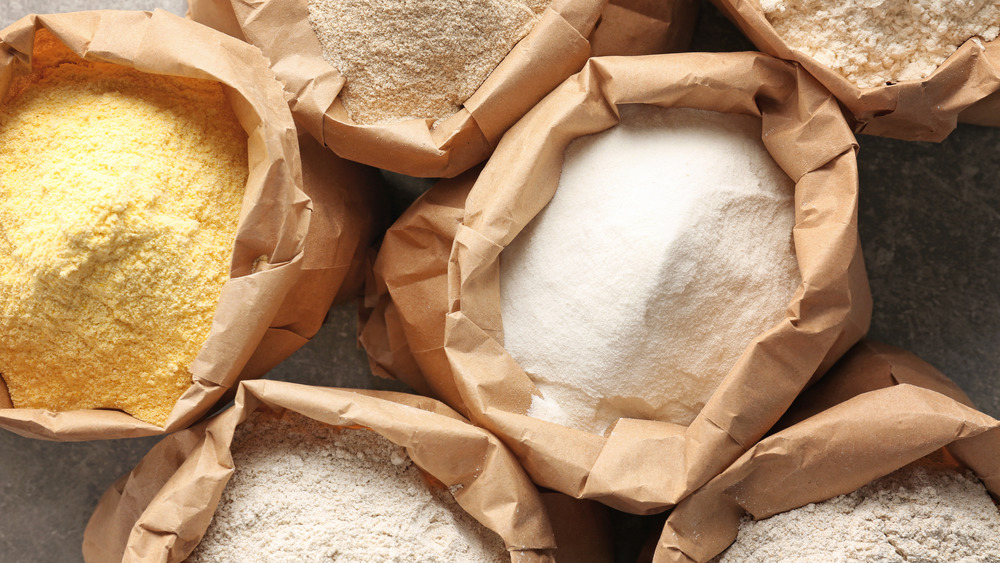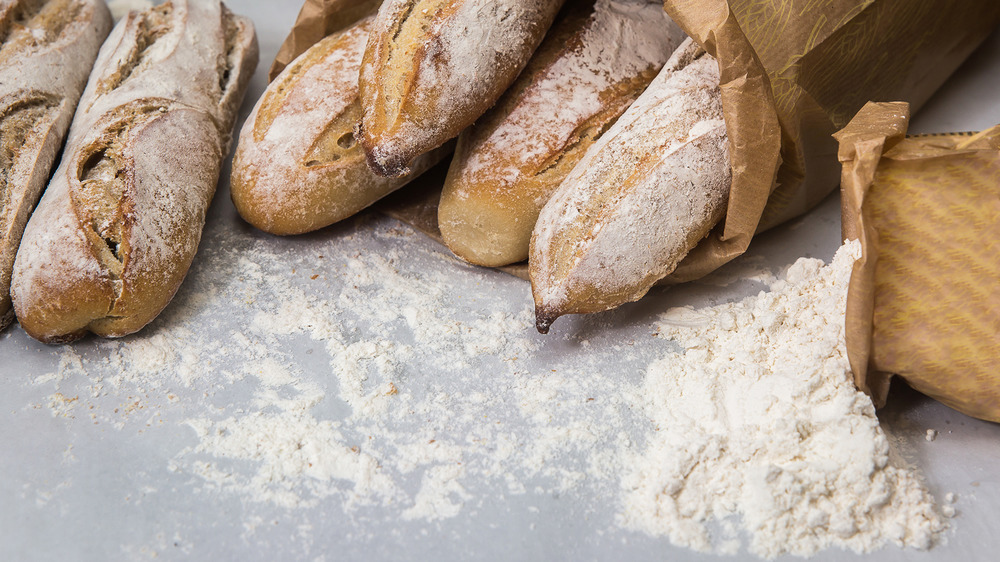This Is The Best Type Of Flour For Baguettes
We'd know the difference between almond flour and wheat flour, and we'd likely be able to tell the difference between whole wheat flour and all-purpose flour. But did you know that there's a whole universe of wheat flours that you've probably never even knew about, never mind considered, before?
It all comes down to two qualities: protein and gluten. Flour made with high-protein wheat, which translates to between ten to 14 percent is considered hard, while flour made with low-protein wheat is considered soft. King Arthur Flour sets specific protein percentages for each type of flour it makes and markets, so Self-Rising and Italian-Style flours both contain 8.5 protein and All-Purpose contains 11.7 percent; Bread contains 12.7 percent while Whole Wheat contains 14 percent protein.
But protein is only one part of the equation. There is gluten to consider, too, and that's the quality that gives structure and texture to a loaf of bread, a cookie, cake, or muffin (via Country Living). The unfortunate truth about gluten is that it can also sets off an intolerance that damages the small intestine known as Celiac disease (via MedlinePlus), which is how gluten-free flours — which aren't actually made of wheat but rather things like rice and tapioca — came to be. But if you're looking for the ultimate flour to make something as scrumptious as a baguette, there are a few things to take into consideration.
European and American flours are classified in a different way
The European flour universe is much more complicated, because they also look at what's known as the "ash content," which is determined by burning a specific amount of flour and looking at what is left behind. The ash is the stuff we see after the flour is torched, and is made up of minerals. The higher the ash, the more germ, bran, and outer endosperm the flour has. The lower the ash, the more refined (or processed) the flour is, and the French use the ash content in milligrams to label their flours (via Weekend Bakery).
French flours have a wide variety of types with different ash contents from T45 — which could be equivalent to our pastry flour — while T65, T80, and T110 are stronger bread flours. Then there is the middle-of-the-road T55, which is a hard white, which may sit close in scale to an American all-purpose. While, as baker/blogger Vincent Catala points out, there are two T55s; the all-purpose variety has between ten to 12 percent of protein, while its bread flour counterpart has between 12 to 14 percent. So, you'd be looking at the Type 55 bread flour for making your baguettes.

